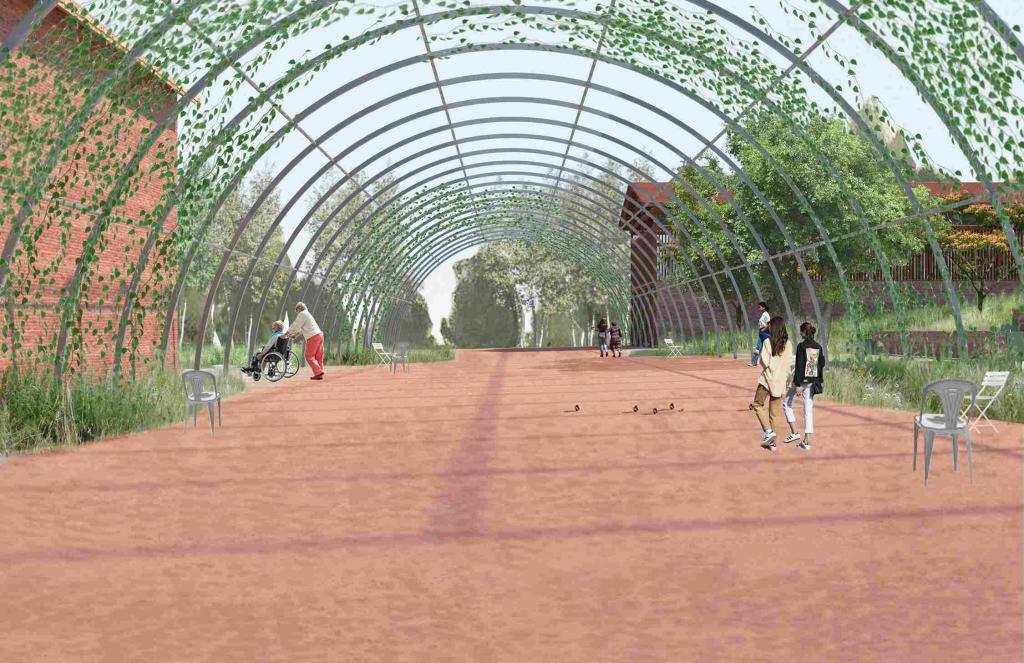Thessaloniki gets ready for its metro launch in November
The underground rapid transit lines have been under construction for almost two decades due to various project delays
 TheMayor.EU logo
TheMayor.EU logo 
The Anderlecht community garden will have public spaces next to food packing facilities in a complete farming cycle, Source: 51N4E via Bruxelles-Environement
The community garden will occupy a 4,900 sq m site in Anderlecht, complete with growing, packing and entertainment facilities
Yesterday, Bruxelles-Environement announced that they will develop a community garden in Anderlecht, on the outskirts of the Belgian capital. The site will have an area of 4,900 square metres and will combine farming areas with communal spaces, to help strengthen the link between Brussels citizens and local producers.
Although the garden is mainly intended for local professional growers, it will also be open to the local community. Apart from the farming areas, it will feature a packing area, a small tasting zone and an open-air public space accessible to everyone.
The public area, in particular, is a strong selling point of the new community garden in Ketelhoeve in Neerpede, as Bruxelles-Environement has stated that it should be used for markets and entertainment events on a regular basis.
The project is supposed to bring food producers and residents together, while also generating locally sourced food. This would shorten supply trips and bring Brussels’ citizens closer to where food is actually being made.
According to an official statement, the whole project will cost just over 3 million euros, while development on the site will take around 18 months. The lion’s share of the funds will come through the European Regional Development Fund and another 1.4 million euros will come from Bruxelles-Environement.
After it is complete, the site will be managed for 10 years by a group of NGOs with the collective name La ferme du Chaudron.
Additionally, the development plan for the community garden will take advantage of the fact that currently there are some dilapidated structures on site. Any buildings that can be kept intact will be preserved, while the rest will be recycled for building materials.
The bricks will be used for walls and flowerbeds and the roofing will be used for paths. The site will also recycle rainwater for irrigation via a 40 cubic metre tank, and use worms in toilets to generate compost. The site will also be energy independent, as a small solar farm will cover most of the local demand.
Are you between 15 and 29 years old? Take a moment to complete a short survey on youth empowerment on this link.

The underground rapid transit lines have been under construction for almost two decades due to various project delays

Now you can get your wine in Talence by paying directly in Bitcoin

That’s because the state has to spend money on updating the railway infrastructure rather than subsidizing the cost of the popular pass

Rethinking renewable energy sources for the urban landscape

The examples, compiled by Beyond Fossil Fuels, can inform and inspire communities and entrepreneurs that still feel trepidation at the prospect of energy transition

Now you can get your wine in Talence by paying directly in Bitcoin

The 10th European Conference on Sustainable Cities and Towns (ESCT) sets the stage for stronger cooperation between the EU, national and local level to fast track Europe's transition to climate neutrality.

At least, that’s the promise made by the mayor of Paris, Anne Hidalgo

The underground rapid transit lines have been under construction for almost two decades due to various project delays

At least, that’s the promise made by the mayor of Paris, Anne Hidalgo

Hostal de Pinós is located in the geographical centre of the autonomous region

Despite its church-y name, the district has long been known as the hangout spot for the artsy crowds

Urban dwellers across the EU are having a say in making their surroundings friendlier to people and the environment.

Forests in the EU can help green the European construction industry and bolster a continent-wide push for architectural improvements.

Apply by 10 November and do your part for the transformation of European public spaces

An interview with the Mayor of a Polish city that seeks to reinvent itself

An interview with the newly elected ICLEI President and Mayor of Malmö

A conversation with the Mayor of Lisbon about the spirit and dimensions of innovation present in the Portuguese capital














